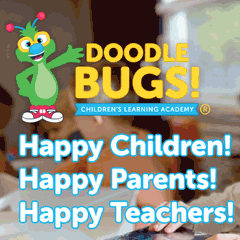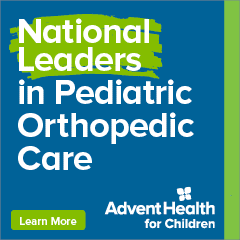Close to Home
Orlando is a hotbed for human trafficking but the community is coming together to address the crisis…
 Last month, the city of Orlando hosted FREEDOM2017, honoring the efforts of the human trafficking group Florida Abolitionist. Mayor Buddy Dyer spoke at the event and didn’t mince words about the local impact of human trafficking, saying, “While it’s a worldwide epidemic, we’re not immune here in the happiest place on earth.” His words come at a time when the Central Florida community is awakening to its vulnerability on this particular world crisis.
Last month, the city of Orlando hosted FREEDOM2017, honoring the efforts of the human trafficking group Florida Abolitionist. Mayor Buddy Dyer spoke at the event and didn’t mince words about the local impact of human trafficking, saying, “While it’s a worldwide epidemic, we’re not immune here in the happiest place on earth.” His words come at a time when the Central Florida community is awakening to its vulnerability on this particular world crisis.
This modern-day slavery can take many forms from sexual exploitation to labor, and it doesn’t discriminate with its victims: children, teenagers, men, women, Americans and immigrants—and it’s happening right in front of our eyes. “People assume this crime only involves people from other countries, but a majority of sex trafficking survivors are American,” says Blair Pippin, associate director of Florida Abolitionist. “These are people from our communities being trafficked in and around our communities.” The group aided 275 survivors in Orange County last year, but countless more have yet to be identified.
Several factors contribute to how pervasive human trafficking is in Central Florida. The proximity of major cities, highways and tourist attractions creates a transient culture and an economic demand for the product. “There are buyers [creating demand] and the traffickers are supplying the product by forcing young women and men [into sex work],” says Pippin.
Advocacy groups believe a heightened awareness and involvement from the public are crucial to identifying victims and providing a continuum of care to allow them to heal mentally and physically. One step to making this a reality is the newly announced crisis center for human trafficking survivors in Orange County, which will be paid for by the county and staffed by Aspire Health Partners.
Another step is recognizing the problem exists. “It’s something people don’t want to talk about, like drugs or domestic violence,” says Pippin. “We need to talk about it and help people identify it sooner.”
How it happens
Perhaps the biggest misconception about human trafficking is how it happens. Many people conjure images from the movie Taken, yet rarely does a victim’s story begin with kidnapping. Instead, it is a highly manipulative process.
“In most cases, it’s a grooming,” says Pippin. “The trafficker will begin a relationship with the potential victim. It can be a woman who acts like a big sister or a male who becomes a romantic partner, buying them things, treating them well. There can also be some level of violence, not necessarily toward the victim, but the victim may witness it and become fearful of what will happen if he or she doesn’t do what the trafficker wants. In sex trafficking stories, potential victims are approached by people pretending to be talent scouts or modeling agents. They may begin by taking harmless photos but it progresses into lingerie or pornography.”
And the issue is bigger than sex trafficking. Labor trafficking is another important element in the form of nail salons, massage parlors, hotel housekeeping staff and agricultural labor, says Pippin, occurring in plain sight.
The average age nationally for children recruited into sex trafficking is 12-14. Often children who find themselves in these situations have weaknesses preyed upon by the trafficker. To keep their victims enslaved, traffickers may resort to actual imprisonment, but more commonly the chains of bondage are fear, isolation and shame. Victims may owe a debt to their trafficker, have important documents confiscated or could be threatened by the trafficker exposing their actions to family.
Through it all, the victim may not even realize they are being trafficked because they have become dependent on their trafficker.
“The commonality of children that are targeted is their vulnerability,” says Sue Aboul-hosn, BSSW, CSW, regional human trafficking coordinator for the Florida Department of Children and Families (DCF). “Vulnerability comes in all forms, found among all socioeconomic classes and all races. It can be a dysfunctional home life, substance abuse, prior physical or sexual abuse, self-esteem issues, cognitive issues, homelessness or runaway, lack of legal documentation, LGBTQ, etc. The most common tactics for manipulation is that the trafficker looks for that vulnerable child, identifies their weaknesses and needs and then fills them with hope and promises. They get the child dependent on them and trauma bonding starts.”
Lindsey Phillips, director of external affairs at Devereux Advanced Behavioral Health Florida, which offers a continuum of services for children who are victims of sexual abuse, trauma and exploitation, says the Florida Safe Harbor Law, passed in 2012, set the direction for a number of opportunities to pave the way for services that now exist. “Prior to these changes in statute, if a child was uncovered through law enforcement as being trafficked, it was not uncommon that they were arrested for prostitution,” says Phillips. “[Under the new law], any individual under 18 in this situation, at risk or identified, is identified as a victim. No child chooses this life. Someone has taken advantage of their vulnerability, and thanks to our Florida legislature, this has helped change the model of collaboration among law enforcement, state agencies and service providers.”
In order for law enforcement to identify these victims though, warning signs must be recognized and reported. “When a child begins to act different from their norm, a parent or guardian needs to pay attention,” says Aboul-hosn. “A decline in grades, absenteeism, secrecy, or fear, anxiety, depression, submission, tension and/or nervousness are signs something is going on. Sexually exploited children and youth often express interest in, or are in relationships with, adults or older men. There may be evidence of controlling or dominating relationships, including repeated phone calls from a ‘boyfriend’ and/or excessive concern about displeasing their partner. A child who has multiple phones or comes home with a new cell phone or laptop that the guardian did not provide should be of concern.” Other indicators could be new clothing or a tattoo which is often a form of branding by pimps.
Community awareness and response
It was recently reported that Orlando ranks third in the nation per capita for calls into the National Human Trafficking Hotline. While it’s a hard pill to swallow for those who call Orlando home, the high rate of calls does speak to something good, says Pippin. “Calls coming in are good because citizens are informed. We want more people to know about the hotline, the signs and make those calls,” he says.
Aboul-hosn says there has been an increase in reported sex trafficking on the Florida Abuse Hotline and Law Enforcement for a variety of reasons. “From May 2009 to the end of that year, when the human trafficking maltreatment was added to DCF’s Abuse Hotline, there were 43 reports called in on this unique population of children,” she says. “During this past 2016 calendar year, there were 1,485 reports received.” She notes that 23 percent of these cases were verified and cites awareness as an influential factor in the spike in reports.
“Awareness allows for prevention,” Aboul-hosn continues. “Children must become aware of what human trafficking is and what it looks like among their peers. They need to understand the dangers of getting involved and what recruiting tactics look like.”
The community has come together in various ways to combat human trafficking at every angle. The Greater Orlando Human Trafficking Task Force (GOHTTF) coordinates public awareness, education and involvement via alliances with law enforcement, social services, businesses and fellow human trafficking advocacy groups such as Florida Abolitionist.
“The task force has three committees: lawenforcement and the state attorney office, our victim services committee and our education/awareness committee,” says Annie Seay, GOHTTF’s director of community development. “Through these groups we work to increase investigations into human trafficking and have successful prosecution of cases, raise awareness throughout the community and our victim service teams meet to continuously improve upon practices and the care and treatment of survivors of trafficking.”
Care and treatment is multi-faceted for human trafficking victims, especially for children who do not recognize their victimization. “The system of care is designed to let these kids know there are people in their lives who care and are there to help,” says Aboul-hosn. “The child has to be willing and ready to accept the services, which is dependent on their motivation to change. These children have many levels of trauma that intersect on so many levels. A service plan to meet that specific child’s needs is created during a multi-disciplinary staffing when appropriate.” Services needed include legal aid, shelter, clinical, medical, education and substance abuse counseling among others.
Devereux is one such organization working in conjunction with these aforementioned groups. “We are part of a collective effort with the DCF, law enforcement and regional and statewide human trafficking councils (GOHTTF) to respond to the needs in Florida and develop a system of care, a continuum of services to help youth heal,” Phillips says. “Devereux was already providing a number of services to children and adolescents statewide, but we knew we needed specialized care for victims. … Starting with intensive residential placement for survivors and later the development of an outpatient counseling model, Devereux is now focused on supporting families who are willing to provide opportunities for survivors to engage in treatment while residing in a foster family setting.”
One of the greatest needs is foster families, she says. “Families interested in training and certification, may contact us to assist with that process and for ongoing support. Services are ongoing and include an assigned therapist and case manager.”
Becoming a foster could save a survivor’s life, Phillips says. “[A victim’s mental state] may present differently each day. Trauma bonds are strong and it’s hard to break free. We work with children in that mindset, to a place where they can begin to heal. When given the specialized support, the transformation is remarkable. They want a better life and likelihood of falling back into dynamic is significant, which is why the opportunity to continue healing with a family is so beneficial. Fostering is saving someone’s life.”
While many services exist for children, there was a time when survivors over 18 didn’t have access to the care needed. Pippin says that is changing. “This person could have been trafficked since being a minor, but once they turned 18, nobody was there for them,” he says. Florida Abolitionist helps adult victims with case management, housing and drug rehabilitation by partnering with agencies offering those services.
The new Orange County crisis housing shelter for adults will be a safe haven, open 24/7, where victims can get the immediate care they need from mental health care and addiction treatment provider Aspire Health Partners. Florida Abolitionist will help streamline the intake process, helping connect victims with medical needs, as well as educational opportunities and therapy. “We will walk with them for years,” Pippin says.
The more attention put on this epidemic, the better. Through community education, financial donations and abolitionist training, those who are at-risk can be helped, resulting in a reduction of demand. As Aboul-hosn says, “This is a community problem that requires a community response.”
This article originally appeared in Orlando Family Magazine’s November 2017 issue.









